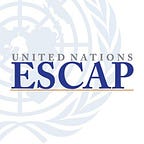Our journey towards gender equality: where are we now?
Social Development Division
By Farzana Sharmin, Associate Social Affairs Officer
I have always been mesmerized by ancient Egyptian civilizations. The fascination became more profound when I learned about Hatshepsut — the first female Pharaoh, who ruled Egypt 3,500 years ago. Yet, the ending of this Pharaoh story is anything but pleasant. History reveals that her tomb was demolished as an attempt to wipe her from memory. The most probable reason? Well, this Pharaoh happened to be a woman, and Pharaohs could not be female.
Gender equality for progress and inclusion
Thousands of years have passed since the Pharaohs. The Nile witnessed many changes. With time, we have increasingly appreciated the values of gender equality. A growing body of research and evidence strongly suggests that gender parity can become a crucial driver of social cohesion, economic prosperity and national income growth. For instance, advancing women’s equality in the countries of Asia-Pacific could add $4.5 trillion to their collective annual GDP by 2025, a 12 per cent increase over the business-as-usual trajectory. Apart from these monetary values and losing contributions from half the workforce, gender equality has a much deeper intrinsic value. It can be seen as the fundamental principle enshrined in our civilization — the manifestation of the philosophy of equality, inclusion and respect for diversity.
What has the United Nations done for gender equality?
The United Nations has actively advocated for an inclusive and coherent society based on the fundamental principle of human rights. At its Charter conference at San Francisco in 1945, there were just four women among the 160 signatories to the UN’s founding document. These leaders subsequently led the organization’s commitment to gender equality. Within a year of its inception, the UN advocated for granting suffrage to women. Despite the commitment, it took almost 50 years to reach a universal framework for ensuring gender equality — the Beijing Declaration and Platform for Action (BPfA). Challenges in arriving at a common understanding of equality resulted in a lack of consensus at the 1975 World Conference on Women in Mexico City.
The Beijing Declaration and Platform for Action as the common ground
At last, in 1995, the ground-breaking declaration for gender equality and women’s empowerment was adopted. A fundamental commitment of the declaration is:
“Determined to advance the goals of equality, development and peace for all women everywhere in the interest of all humanity…”
The framework encompasses the legal, institutional and economic set-up established and maintained by stakeholders in 12 critical areas of concern. These are persistent poverty; inequalities and inadequacies in access to education and access to health; violence against women; impact of armed and other kinds of conflict on women; inequality in economic structures and policies as well as sharing power and decision making; insufficient mechanisms to promote the advancement of women; lack of respect for the human rights of women; stereotyping of women and unequal access to all communication systems; inequalities in the management of natural resources and persistent discrimination against the girl child.
Where are we after 25 years?
Despite significant progress made so far, notable gaps remain between the aspirations of the BPfA and the lived realities of many women and girls in the region. Not a single country can claim to have achieved gender equality. The Asia and the Pacific SDG Progress Report 2019 finds insufficient progress in the SDG targets to achieve gender equality even within a dozen years. Limited data on unpaid work showed a significant gender gap in several countries. On average, women aged 15 and up spent at least 19–25 per cent of their time on unpaid domestic chores or care work compared to 3–11 per cent of men in the same countries. The report further reflects that some of the gender indicators on SDG 5 have either stagnated or deteriorated. As such, discrimination persists undermining women’s contributions.
Beijing +25: reflection and way forward
2020 will be a landmark year for many reasons. It will be the 75th year since the United Nations started its journey, just 10 years to reach 2030 and 25 years after the adoption of the BPfA. Therefore, 2020 will be a milestone year for reflecting on the progress of gender equality as well. Countries in the region have already identified three priority areas: violence against women, political participation and law and justice for ensuring gender equality. Moving forward, leaders across the region will be gathering for the upcoming Asia-Pacific Ministerial Conference on the Beijing+25 Review from 27 to 29 November. They will be taking stock of the progress made so far as well as discuss the way forward for the years to come.
The SDGs do not promise a utopian world; we are merely envisioning a fairer, more inclusive world built on the principle of leaving no one behind. Realizing that dream warrants acceleration of the existing initiatives and mobilizing everyone involved to realize women’s rights for an equal future.
